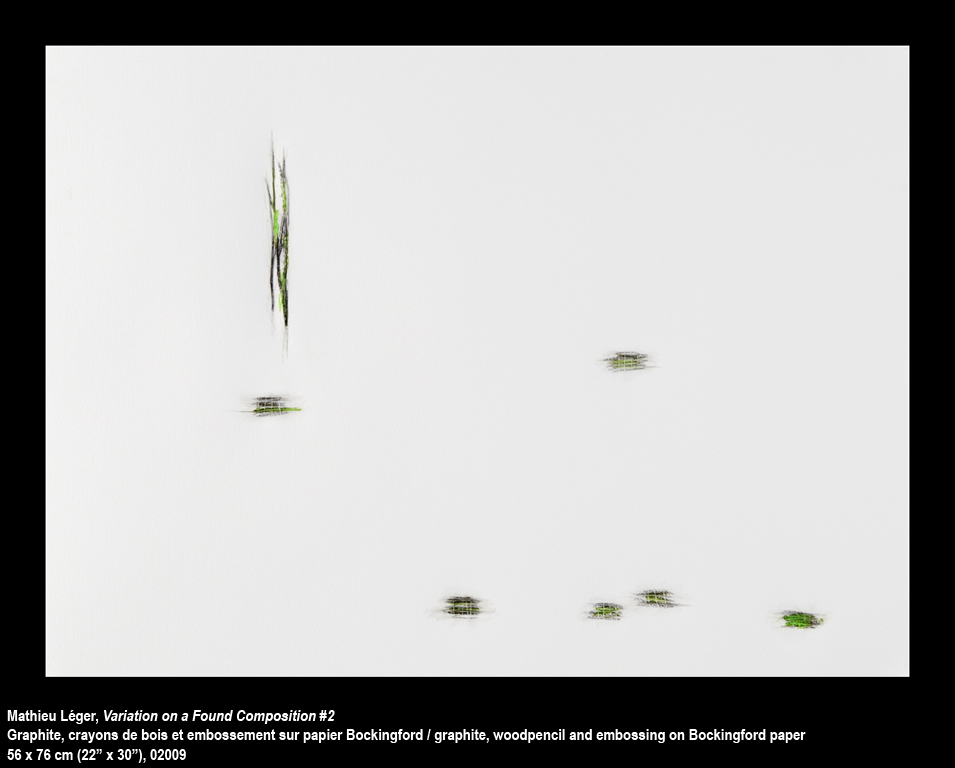Topologies (Drawings from the exhibition [Re] Making Through Trace, Montreal, Canada, 02009)















The images above are a selection of Mathieu Léger's drawing series Topologies. Found below is some of the text from the exhibition in 02009 at Lobhta Art Contemporain in Montreal.
[Re] Making Through Trace.
"Drawing is the first artistic gesture of a human's life; leaving a trace is proof of our own existence to ourselves. Unless it's on paper and visible, it never existed."
Jeremy Coates, The Traceful Mannerisms of Self-Identity
Readymade. There is nothing readymade about the painter's blank canvas or the draftsman’s white sheet, even if we could say that each of those surfaces is already organized, already structured by the lattice through which perspective will map the coordinates of external space. For the smooth white surface of each is nonetheless the index of a kind of emptiness, a fundamental blankness which is that of the visual field itself understood as a field of projection. It stands, that is, for what is assumed to be the nature of vision's spontaneous opening onto the external world as a limitless beyond, an ever retreating horizon, a reserve assumed from the outset but never filled in advance. If in traditional perspective vanishing point and viewing point, horizon line and canvas surface, finally mirror one another in a complicitous reversibility, this is because they represent two funds of pure potentiality, two locations of the always-ever never-yet-filled: on the one hand, the horizon that vision probes, and on the other, the welling up of the glance.
Rosalind E. Krauss, The Optical Unconscious, p. 54, MIT press, 1994
In a section where she is speaking of Max Ernst's The Master's Bedroom, 1920
[Re] Making Through Trace is a series of sculptural drawings by two artists. Through textured lines and forms, Jesse Collette and Mathieu Léger approach this new body of work with a sculptural hand. This exhibition explores the material qualities of paper both as drawing surface and sculptural material. As a result, their traces become three-dimensional works where they exploit the paper beyond its habitual "surface-only" approach. Using tools and techniques from drawing, printmaking and sculpture, they approach the paper with a three dimensional curiosity.
"When we began talking about this project, we wanted very limited compositional elements on the paper as well as selective and sparse use of colour. The compositions are mostly based on found urban compositions, where a person leaving a trace provides a matrix for us to use as a starting point."
L'artiste désire remercier les organismes suivants pour leurs appui :
The artist would like to acknowledge the following organizations for their support: